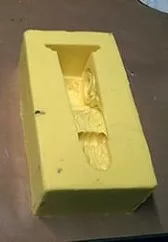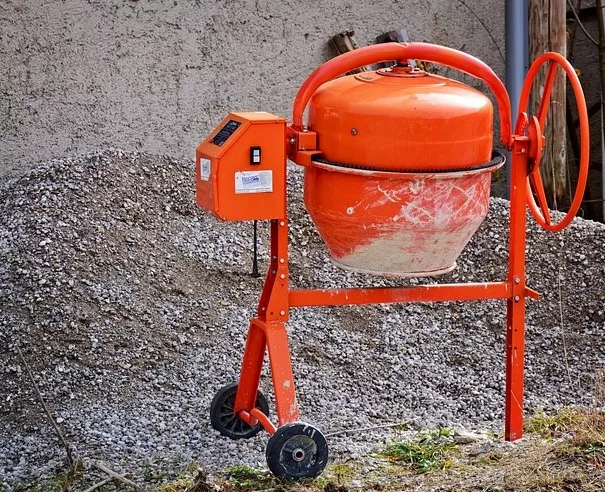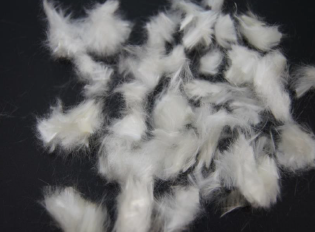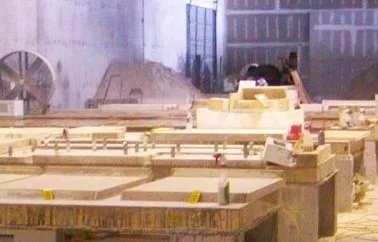
5 Steps to making a piece of wet cast stone which is a versatile and durable material that’s often used in construction and art projects. It’s made by pouring a wet casting mix into a mold where it sets and takes on the mold’s shape and texture. It’s pretty cool because you can essentially create any design you want with the right mold and mix.
List of Contents
- Step 1. Choose and prepare your mold.
- Step 2. Preparing the molds surface.
- Step 3. Batching your mix.
- Step 4. Pouring, screening and trowling.
- Step 5. Demolding and quality control checks.
- Summary
- Materials List
I/We promote transparency. This post or site may contain affiliate links. This means only if you make a purchase through these links, not just by clicking, I/we may earn a small commission at no extra cost to you.
As an Amazon Associate, I earn from qualifying purchases
The Materials
The key to using wet-cast stone successfully is understanding 5 steps to making a piece of wet cast stone’ and its materials and processes. You don’t need to be a stone mason or have any sort of formal training. It’s all about having the right information and a bit of patience. Almost anyone can learn to do it, and the results can be really rewarding.
For starters, you’ll need a mold, some sort of release agent (to make sure your stone comes out of the mold easily), cement and aggregates for the mix, water, and concrete fibers for reinforcement. Optional items include using white cement, pigments for coloring and textures to give your stone a unique finish.
There’s a lot of flexibility with the 5 steps to making a piece of wet cast stone , allowing you to customize it to suit your project’s needs. From garden statues and stepping stones to decorative wall plaques and architectural elements, the sky’s the limit when it comes to what you can create.
Step 1: Of 5 Steps To Making a Piece Of Wet Cast Stone. Choose and Prepare Your Mold
In 5 steps to making a piece of wet cast stone, selecting the right mold for your project is a vital step. You can find molds online or even create your own if you’re feeling crafty. There are tons of options ranging from simple geometric shapes & trims to intricate designs. Whatever you choose, make sure the mold is made of sturdy materials like wood, silicone or plastic to withstand the casting process.
After selecting your mold, it’s essential to set it up on a level surface. This ensures the wet mix sets evenly and doesn’t pool to one side or end. Uneven surfaces lead to lopsided pieces, which isn’t what anyone wants. A good trick is to place your mold on a sheet of plywood or a flat workbench – something you know is stable.
Stabilizing your mold is as crucial as leveling it. Prevent the mold from shifting or wobbling by securing it with screws, clamps or weights. This will save you a ton of trouble later on.
Lastly, clean your mold thoroughly before using it. Any dirt or residue left in the mold can affect the finish of your casting, leaving imperfections. A quick wipe-down with a soft cloth and some mild soap usually does the trick. Now, you’re all set to move on to the next step!

Step 2: Of 5 Steps To Making a Piece Of Wet Cast Stone: Preparing Your Mold Surface
Before diving into the mixing and pouring, in the 5 Steps to making a piece of wet cast stone, it’s crucial to set up your mold surface properly. This step can make a huge difference in the final look of your precast stone. Start with selecting the right release agent. This stuff helps get the stone out of the mold without sticking or breaking. You can find various release agents designed for specific mold materials, so pick one that matches what you’re working with, or that suits you texturing method
Make sure you apply the release agent evenly over the entire mold surface. Missing spots can cause parts of the stone to stick, ruining your piece. After applying the release agent, go ahead and add any texture you’ve chosen, ensuring it’s evenly distributed. Put in the extra effort now to save yourself headaches later. If you are going to use the baking soda method for texturing, you might want use Crisco for the release agent. This allows the hardened soda to stay in place better.
Next up in 5 Steps to making a piece of wet cast stone is texture. Adding texture to your mold surface can elevate the aesthetics of your finished piece. For example, a dried and clumped baking soda finish gives a textured surface, similar to natural coral stone look that’s pretty popular. To create this, you simply throw the semi-dried soda onto the mold’s surface. For other textures, you might use specially designed thin liners to imprint designs.

Step 3: Of 5 Steps To Making a Piece Of Wet Cast Stone: Batching Your Mix
With your mold prepped, next in the 5 steps to making a piece of wet cast stone, it’s time to focus on the chosen mix. Which is the backbone of your precast stone piece. Start by selecting your desired color. Powdered oxide pigments come in a range of shades from natural stone hues to vibrant tones. Mix the pigment thoroughly with some of the water first to ensure an even color dispersion throughout your mix.
Next is your cement, and then your chosen aggregates, a coarse concrete sand would be a good choice. Make sure you have premeasured your quantities, preferably by weight. If using a concrete or cement mixer, let them all mix thoroughly together into a creamy consistency, by adding more water if needed. Its hard to give an exact amount of water as there are too many variables with aggregates and issues like how dry they are.

Then you can add the fibers at this point, at a minimal dose, slowly sprinkle them into your mix, do not overdo the amounts. otherwise, the fibers will clump. The fibers are being used to reduce cracking, not to add structural strength, which is why it is best to use a minimal dosage. But even at this dosage, it will still be making your piece much more structurally durable.
This is a hands-on process, so don’t be afraid to get in there and make sure everything is well combined, whether with a mixer or mixing drill & whisk. We don’t recommend the drill and whisk for larger amounts.
Next, slowly add any additional water to your mix. It’s crucial to get the consistency just right. – Too much water and your concrete will be weak; too little and it won’t flow into the mold properly. Aim for a thick, creamy milkshake-like consistency. Use a mixing tool or bucket trowel can work if you’re working with a small batch.

Step 4: Of 5 Steps To Making a Piece Of Wet Cast Stone: Pouring, Screeding, and Troweling
Once everything’s mixed, tip it out and transport it to your or keep it in the same bucket you mixed it in. Now, you’re ready to pour your mix into the mold.
With your concrete mix ready, next in the 5 Steps to making a piece of wet cast stone, it’s time to pour it into your prepped mold. Start by pouring slowly and methodically to avoid air pockets that can weaken the stone and leave voids. You want to make sure the mix reaches every corner of the mold.
Once poured, the next step is screeding. This involves leveling off the top surface of the concrete mix using a straight edge of wood or metal straight. Move the straightedge back and forth over the mold to get a smooth, flat surface. This helps push down any expose aggreagte and bring the air bubbles to the surface.
After screeding, grab a trowel to finish up. Troweling smooths out the surface and makes it easier to install your piece or hang it on a wall. If you are hanging your piece, either leave a hole made with a pencil, deep enough to cover a screw head. Or you need to put a piece of stainless steel wire into the back of your piece while it’s still wet.
Make sure to work relatively quickly; before the concrete starts to set up Once you’re satisfied with the surface, leave the mold in a safe, undisturbed place to cure. This usually takes around 24 hours but can vary depending on factors like humidity and temperature. Be patient – a well-cured stone is much more durable and less likely to crack. Now, just let it set overnight, and you’re almost there.
Step 5: Of 5 Steps To Making a Piece Of Wet Cast Stone: Demolding and Quality Control Checks
After letting your concrete cure overnight, for one of the 5 steps to making a piece of wet cast stone, now it’s time to demold your creation. Be careful during this step to avoid damaging the piece. Start by gently tapping the mold to loosen the stone. If it seems stubborn, use a soft rubber mallet, tapping around the edges to help release it. Patience is key here; rushing can lead to cracks or breaks.
Once the stone is out of the mold, inspect it closely. Look for any air bubbles, cracks, or imperfections. Small air bubbles can usually be filled in with a bit of extra mix.
After inspection, cleaning the mold is crucial for future use. A thorough clean ensures your next casting will come out just as beautifully as the first. Use mild soap and water, and avoid abrasive materials that might scratch or damage the mold’s surface.
If you plan to produce more stones, prepare the mold for the next round. If done for the day, store the mold in a cool, dry place to preserve its integrity. Proper mold care extends its lifespan, especially if it is a rubber mold, saving you money and hassle down the line.
Summary and Next In The 5 Steps to making a piece of wet cast stone
Recapping the process, you started by choosing and preparing your mold, which set the foundation for everything else. After ensuring the mold surface was properly treated and textured, you mixed your concrete with the right color and reinforcing fibers. Pouring, screeding, and troweling followed to guarantee a smooth and even finish. Finally, you demolded your piece and inspected it for any imperfections, wrapping it all up with a good mold cleaning.
Now that you’ve got the basics down, you might run into a few hiccups here and there. If your stone cracks, it could be due to too much water or insufficient curing time. If it sticks to the mold, double-check your release agent and it’s application. Rustling up perfect pieces often comes with a bit of trial and error at first, but that’s all part of the fun and learning process.
Many Opportunities
With this newfound skill, the possibilities are endless. You can experiment with different molds, colors, and textures to create custom pieces. Whether you’re making decorative garden stones, bespoke wall plaques, or functional elements like pavers, you now have the fundamentals to bring your ideas to life. Keep honing your technique, and who knows? You might just turn this into a rewarding hobby or even a small business venture.
Please Don’t Forget Issues Of Safety
Please remember to take the appropriate safety precautions, gloves, eye protection and a mask are the bare minimum. A pair of safety shoes is always a good call, especially with heavy items around.
Materials List
- 1. A mold
- 2. Mold release
- 3. Texture material (if using) baking soda
- 4 Mixer or mixing drill and whisk
- 5. Bucket and trowel.
- 6. Cement- white or grey
- 7. Concrete sand or small gravel and sand
- 8. Colored oxide pigments of your choice
- 9. Concrete fibers
- 10. Clean water
- 11. A level working area
Contact Us
We hope you find the information useful, but if you have any questions or need help, send us a message. You do have to sign in and confirm these days to comply with government rules. Sorry for the inconvenience.
Author Rob


The breakdown of the five steps was clear, especially when you explained the importance of mixing the right amount of water to get the perfect consistency. That’s something I hadn’t considered before! I’m curious though, do you have any tips on how to avoid air bubbles during the pouring process? Also, I noticed you mentioned sealing the stone after it’s cured. How often should that be done for outdoor pieces? Thanks again for such a great guide!